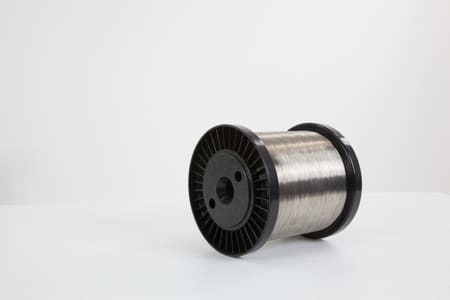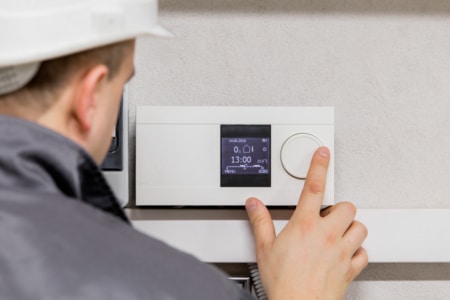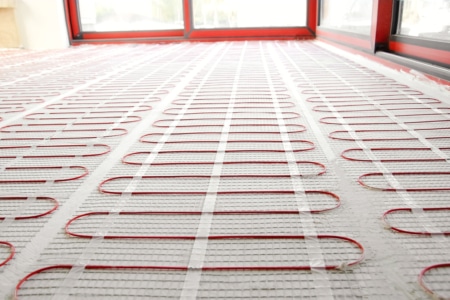A sheathed thermocouple is used to protect the thermocouple junction, which measures temperature, from attack by corrosive environments.
It comes in two types: grounded and ungrounded thermocouples. Each construction method has its benefits, but which should you choose? As an experienced thermocouple wire manufacturer, we're equipped to help you decide which one is best for your application.
Grounded vs Ungrounded Thermocouple: Which One Is Ideal For Your Needs?
By Stephen Holt, Technical Manager since 1996
What Are Thermocouples?
To start, let’s explore what a thermocouple is. It is a temperature sensor that consists of two lengths of dissimilar metal wire joined together at both ends. One end is placed in or against the item you are wanting to measure the temperature of (the ‘hot’ end) and the other is held at a known reference temperature (the ‘cold’ end). The junctions and the temperature gradient along the length of the wires generate a voltage that is proportional to the temperature difference between the junctions. Placing a voltmeter in the circuit at the reference end allows you to measure this voltage and it can then be converted into a temperature reading electronically.
Thermocouples are available in many different types, each with unique characteristics. One of the most common types of thermocouple is made from a Copper positive leg with a Copper/Nickel or Constantan negative leg and is known as Type T.
Thermocouples are made from other pair combinations of metals such as Iron and Constantan (Type J), Nickel/Chromium and Nickel/Aluminium (Type K) or Platinum/Rhodium and Platinum (Type R or S). Each of these can be susceptible to corrosion in certain circumstances, so are often insulated in a high-temperature ceramic medium and then placed within a corrosion-resistant metal sheath.
Grounded vs Ungrounded Thermocouples
So, which should you choose: grounded or ungrounded thermocouple?
In a grounded thermocouple, the ‘hot’ junction is physically attached to the inside of the tip of the probe sheath by welding, whereas an ungrounded thermocouple is detached and insulated from the inner wall.
Grounded thermocouples react faster. They have a faster response time to changes in temperature because of their direct contact with the probe sheath, but this contact makes them susceptible to electronic noise from the environment acting on the metal probe wall, resulting in a loss of accuracy.
Grounded thermocouples are recommended for use in measuring gas or liquid temperatures, particularly in high-pressure applications where a fast response is needed.
Ungrounded thermocouples are unaffected by electronic noise but are slower to react to temperature change. This makes them more accurate, especially where the emf (voltage) signal level is lower. They are recommended for use in environments where there may be a high level of electromagnetic noise, such as in electric motors or generators, but temperature fluctuations are slower.
Other Factors to Consider When Choosing a Thermocouple?
There are several other factors to consider before selecting a sheathed thermocouple for your application. These include the operating temperature range, accuracy and price.
Operating Temperature Range
This is the operating temperature range over which the thermocouple type can accurately measure temperature. Thermocouples are available in a wide variety of operating temperature ranges with Type T going from -200°C to 370°C, Type K from -200°C to 1200°C and Type S from 0°C to +1600°C. Tungsten/Rhenium thermocouple temperature sensors are available going right up to 2500°C.
Accuracy
A thermocouple's accuracy is the measurement's maximum error. Thermocouples have an inherent accuracy that is affected by many factors, such as material properties, construction, and calibration. Therefore, it is vital to choose a thermocouple with an accuracy that is appropriate for your application.
Price
Copper vs Constantan (T) or Iron vs Constantan (J) are much cheaper materials than the Platinum/Rhenium vs Platinum used in Types R & S. However, the lower priced materials are only useable over a lower temperature range.
Choosing Between Grounded and Ungrounded Thermocouples
Overall, there are many factors to consider before choosing a thermocouple for your application. Choosing a thermocouple that is appropriate for your operating temperature range, accuracy, response time, price, and installation requirements is important.
Please contact us if you have any questions about grounded and ungrounded thermocouples or need help choosing the right one for your application. We would be happy to assist you.


